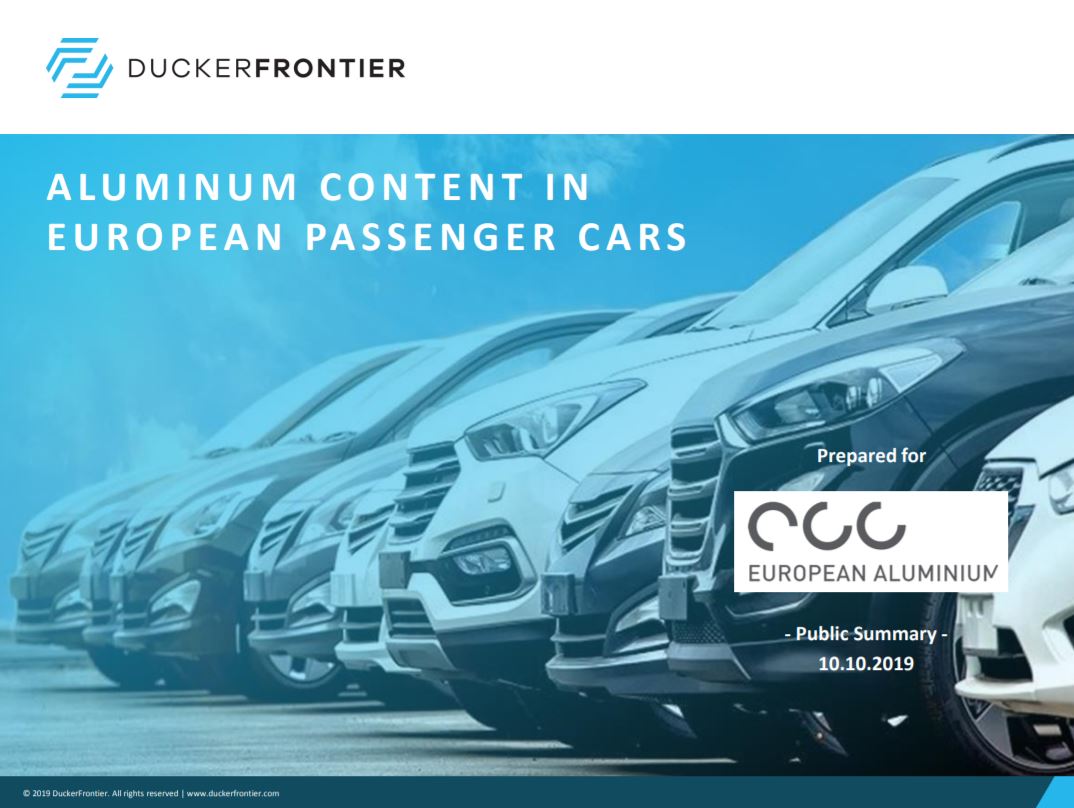A new study, “Aluminum Content in European Passenger Cars,” published by European Aluminium estimates that the average aluminum content of European produced cars will reach nearly 180 kg in 2019, a 20% increase since 2016. The study also forecasts the average aluminum content will further increase to almost 200 kg per vehicle by 2025. The study, developed by DuckerFrontier, includes data from OEMs, suppliers, and European Aluminium member companies. The positive outlook and uninterrupted aluminum growth is largely attributed to aluminum’s role in lightweighting cars and electro-mobility.
Carmakers’ preference for aluminum is linked to its light weight, which makes cars more energy efficient, whether they are a gas, diesel, or electric vehicle. Due to its inherent strength and ability to absorb crash energy, well-engineered aluminum car parts can be made safer than steel and up to 50% lighter. Lighter cars contribute to reducing CO2 emissions improving fuel efficiency.
The study points to electrification as one of the main drivers for future growth of aluminum content in all product forms. Battery boxes, electric motor housings, body closures, and body structures are key applications for increased aluminum penetration in the future.
“Aluminum is a true enabler of electro-mobility,”said Dieter Höll, chairman Automotive & Transport Board, European Aluminium. “The combination of aluminum sheet, extrusions and castings bring perfect solutions for electric vehicles. Both as protection of the batteries and to reduce the weight of the vehicle to increase its performance or range.”
Depending on the car segment, the average aluminum content per vehicle is forecasted to increase from at least 2.9 kg by 2025 in the A-segment (mini/compact cars) and up to 38.0 kg in the D-segment (large family cars). The aluminum industry and car manufacturers are collaborating to drive lightweighting into more segments.
During the last two decades, hundreds of new alloys have been developed to better answer the demand of vehicle manufacturers. Higher strength, better formability, and improved energy absorption are a few of the areas the industry is focusing on moving forward. The aluminum industry is also investing in innovations like charging stations and electric power plants that will support the transition to electric mobility.
Editor’s Note: This article first appeared in the October 2019 issue of Light Metal Age. To receive the current issue, please subscribe.

